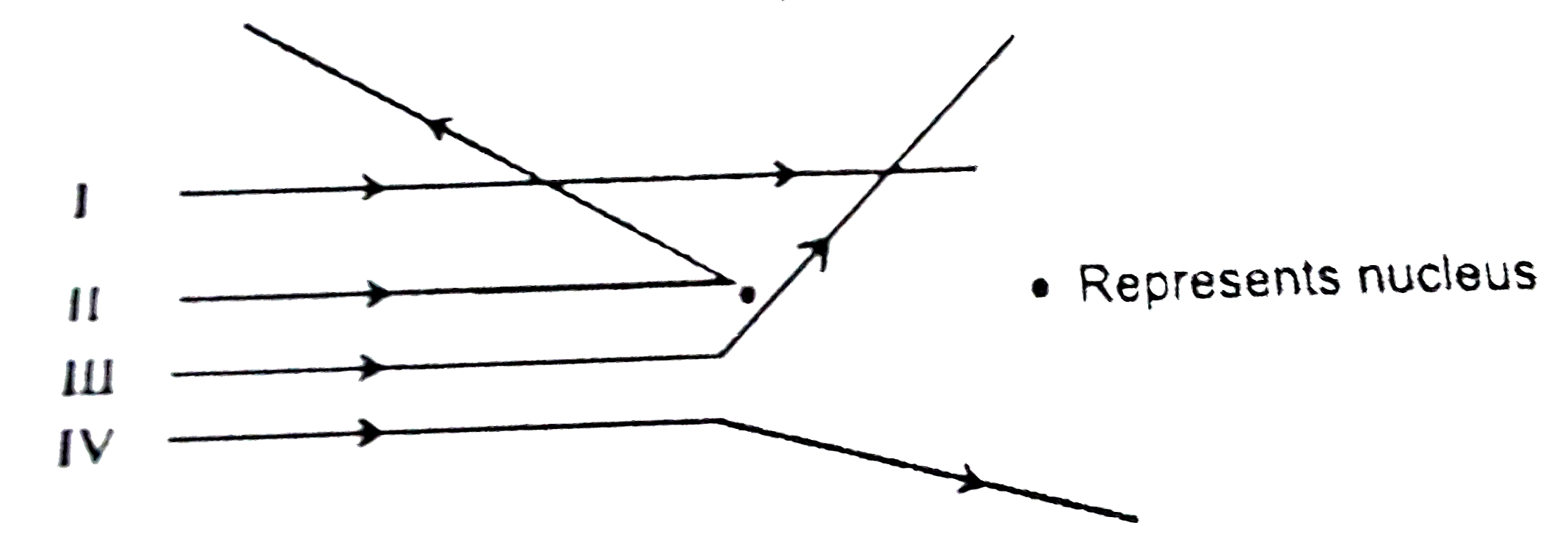Thickness of the foil of gold used in α-particle scattering experiment is
2.1×10−7 m
3.5×10−5 m
2.1×10−9 m
3.5×10−6 m
The correct Answer is:A
To find the thickness of the gold foil used in the alpha-particle scattering experiment, we can follow these steps:
1. Understand the context: The alpha-particle scattering experiment was conducted by Rutherford to study the structure of the atom. He used a very thin foil of gold in this experiment.
2. Know the thickness in Angstroms: It is known that the thickness of the gold foil used in the experiment is approximately 2100 Angstroms (Å).
3. Convert Angstroms to meters: We need to convert the thickness from Angstroms to meters. The conversion factor is:
1 Å=10−10 m
Therefore, to convert 2100 Å to meters:
Thickness in meters=2100 Å×10−10 m/Å
4. Perform the calculation:
Thickness in meters=2100×10−10 m=2.1×10−7 m
5. Select the correct option: Now, we check the options given in the question:
- Option 1: 2.1×10−7 m
- Option 2: 3.5×10−5 m
- Option 3: 2.1×10−9 m
- Option 4: 3.5×10−6 m
The correct answer is Option 1: 2.1×10−7 m.
Final Answer:
The thickness of the gold foil used in the alpha-particle scattering experiment is 2.1×10−7 m.
1 Å=10−10 m
Therefore, to convert 2100 Å to meters:
Thickness in meters=2100 Å×10−10 m/Å
Thickness in meters=2100×10−10 m=2.1×10−7 m
- Option 1: 2.1×10−7 m
- Option 2: 3.5×10−5 m
- Option 3: 2.1×10−9 m
- Option 4: 3.5×10−6 m
The thickness of the gold foil used in the alpha-particle scattering experiment is 2.1×10−7 m.
Topper's Solved these Questions
- ATOMSBOOK - AAKASH INSTITUTE ENGLISHCHAPTER - ATOMSEXERCISE - ASSIGNMENT SECTION B Objective (One option is correct )
12 Videos
- ATOMSBOOK - AAKASH INSTITUTE ENGLISHCHAPTER - ATOMSEXERCISE - ASSIGNMENT SECTION C Objective (More than one option is correct )
6 Videos
- ATOMSBOOK - AAKASH INSTITUTE ENGLISHCHAPTER - ATOMSEXERCISE - Try Yourself
24 Videos
- ALTERNATING CURRENT BOOK - AAKASH INSTITUTE ENGLISHCHAPTER - ALTERNATING CURRENT EXERCISE - Assignment (Section-J) (Aakash Chailengers Questions)
2 Videos
- COMMUNICATION SYSTEMS BOOK - AAKASH INSTITUTE ENGLISHCHAPTER - COMMUNICATION SYSTEMS EXERCISE - ASSIGNMENT SECTION D (Assertion-Reason)
10 Videos
Similar Questions
Knowledge Check
Which of the following conclusions regarding the structure of atom is based on Rutherford's α-particle scattering experiment?
AThe positive charge is concentrated in a very small volume of the atom.BThe positive charge is scattered with the electrons throughout the atom.CThe volume occupied by the nucleus is half of the volume of atom.DMost of the space in the atom is occupied by the neutrons.
What do you think would be the observation if the α-particle scattering experiment is carried out using a foil of a metal other than gold ?
View SolutionVery thin foil of gold was used in scattering experiment. Why ?
View SolutionRutherford's alpha-scattering experiment
View SolutionWhat do you think would be the observation of α-particle scattering experiment if carried out on (i) heavy nucleus like platinum (ii) light nuclei like lithium.
View SolutionFrom the alpha - particle scattering experiment Rutherford concluded that
View SolutionWhich of the following path of α-particle is/are possible in the α-particle scattering experiment?

View SolutionWhich of the following conclusions couldnot be derived from Rutehrford's α-particle scattering experiment?
View Solution
